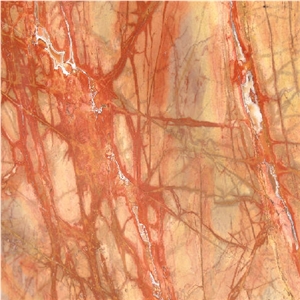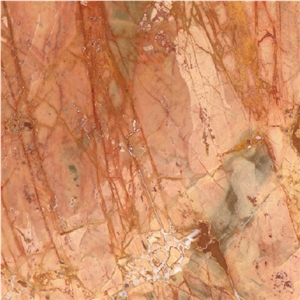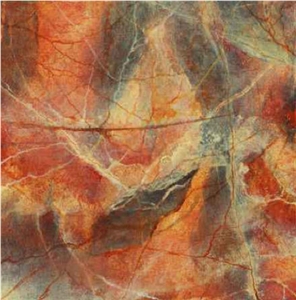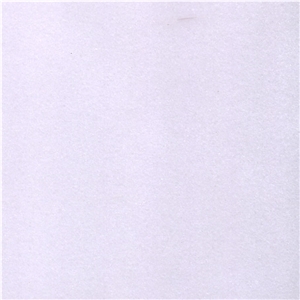Marble in Algeria
( 5 )
Country:
-
 Additional Names:Damascus Red Marble,Rosso Damasco,Rosa Damascus Marble,Numidian Red,Rosso Numidia,Red DamascusmarbleDamascus Red Marble,Rosso Damasco,Rosa Damascus Marble,Numidian Red,Rosso Numidia,Red DamascusmarblePost Request
Additional Names:Damascus Red Marble,Rosso Damasco,Rosa Damascus Marble,Numidian Red,Rosso Numidia,Red DamascusmarbleDamascus Red Marble,Rosso Damasco,Rosa Damascus Marble,Numidian Red,Rosso Numidia,Red DamascusmarblePost Request Algeria
-Marble
Algeria
-Marble -
 Additional Names:Rosa Damascus,Numidian Red,Rosso Numidia,Rosso Damasco Marble,Red Damascus Marble,Damascus Red MarbleRosa Damascus,Numidian Red,Rosso Numidia,Rosso Damasco Marble,Red Damascus Marble,Damascus Red MarblePost Request
Additional Names:Rosa Damascus,Numidian Red,Rosso Numidia,Rosso Damasco Marble,Red Damascus Marble,Damascus Red MarbleRosa Damascus,Numidian Red,Rosso Numidia,Rosso Damasco Marble,Red Damascus Marble,Damascus Red MarblePost Request Algeria
-Marble
Algeria
-Marble -
 Additional Names:Cipolin Sanguins D'oran,Yellowish Red Limestone,Cipolin Sanguins LimestoneCipolin Sanguins D'oran,Yellowish Red Limestone,Cipolin Sanguins LimestonePost Request
Additional Names:Cipolin Sanguins D'oran,Yellowish Red Limestone,Cipolin Sanguins LimestoneCipolin Sanguins D'oran,Yellowish Red Limestone,Cipolin Sanguins LimestonePost Request Algeria
-Marble
Algeria
-Marble -

-
 Additional Names:Algerian White Marble,Marmo Bianco AlgerAlgerian White Marble,Marmo Bianco AlgerPost Request
Additional Names:Algerian White Marble,Marmo Bianco AlgerAlgerian White Marble,Marmo Bianco AlgerPost Request Algeria
-Marble
Algeria
-Marble
- 1
-
How can I make Golden Rose Cream Marble floors not slippery?There are several steps you can take to reduce the slipperiness of Golden Rose Cream Marble floors: 1. Clean the floor regularly: Regular cleaning helps remove any dirt or dust that may make the floor more slippery. Use a pH-neutral cleaner specifically formulated for marble surfaces and follow the manufacturers instructions. 2. Use non-slip rugs or mats: Place non-slip rugs or mats in high-traffic areas, such as entryways or bathrooms, to provide an extra layer of traction and absorb any moisture from shoes or spills. 3. Apply a marble floor sealer: Use a specifically designed marble floor sealer to create an invisible protective barrier on the surface, which can reduce the slipperiness of the marble. Follow the manufacturers instructions for application and reapplication. 4. Implement non-slip treatments: Non-slip treatments like anti-slip coatings or polishes can be applied to the marble floor. These products are designed to increase the traction of the floor surface and reduce the risk of slipping. Ensure that you use products specifically formulated for marble. 5. Keep the floor dry: Wipe up any spills or moisture immediately to prevent the marble floor from becoming slippery. Place absorbent mats near sinks or bathtubs to absorb excess water. 6. Use appropriate footwear: Avoid walking on the marble floor with wet or slippery shoes. Opt for clean, dry footwear or slip-resistant shoes to minimize the risk of slipping. Remember, marble is naturally more slippery than other flooring materials, so it is essential to take precautions to reduce slipperiness and prevent accidents.Read More
-
Can Turkey's Zebrina Marble be used exterior applications in very dusty climates?Turkeys Zebrina Marble can be used for exterior applications in dusty climates, but it may require some additional care and maintenance. Marble is a natural stone that can be affected by weathering, environmental factors, and dust accumulation. In dusty climates, the marble may require regular cleaning to prevent dust buildup and maintain its appearance. Regular cleaning with a mild detergent and water, along with periodic pressure washing, can help remove dust and keep the surface clean. It is also important to seal the marble properly to protect it from dust, stains, and other potential damage. A good quality impregnating sealer specifically designed for marble is recommended. The sealer should be applied periodically, as instructed by the manufacturer, to maintain its protective properties. In extremely dusty climates, it may be necessary to clean the marble more frequently and take additional measures such as installing covers or implementing preventive measures to reduce dust accumulation on the surface. Overall, while Turkeys Zebrina Marble can be used for exterior applications in dusty climates, it is important to maintain regular cleaning and sealing routines to ensure its durability and aesthetic appeal.Read More
-
Can Iran's Lightning Marble be used in a bathroom?I do not have the expertise to determine the specific guidelines for using materials in a bathroom. However, based on the information available online, it appears that certain types of stone, including Lightning Marble, can be used in bathroom areas. However, it is important to consider factors such as water absorption, slip-resistance, and maintenance requirements before using any natural stone in a wet environment. Consult with a professional before making a final decision.Read More
-
Are there color variations of Greece's Rosa Egeo Marble?Yes, there are color variations of Greeces Rosa Egeo Marble. It can range from light pink to dark pink with occasional white veining. Some slabs may have more pronounced veining or be more uniform in color. The exact color variation can depend on the specific quarry and location where the marble is sourced.Read More
-
What is the coefficient of friction of Polished Pakistan's Gold Sahara Marble tiles?I dont have information on Polished Pakistans Gold Sahara Marble tiles coefficient of friction. It would be best to contact the manufacturer or supplier of the tiles for that information.Read More
-
Can Turkey's Likya Grey Marble be used exterior applications in very windy climates?Turkeys Likya Grey Marble can be used in exterior applications in windy climates to some extent. However, it is important to note that marble is a natural stone and may have different properties and durability depending on the specific batch and quality. Likya Grey Marble is known for its elegance and durability, making it suitable for various applications including exterior cladding, paving, and landscaping. It has a dense structure and good weather resistance, which allows it to withstand wind, rain, and sun exposure reasonably well. However, extremely windy climates may pose challenges for any type of exterior material, including marble. Strong winds can carry debris that may impact the surface, and over time, abrasion and erosion may occur. Additionally, if the marble has natural fissures or cracks, constant exposure to wind and weather elements may exacerbate these weaknesses. To ensure the marbles longevity and performance in windy climates, proper installation and maintenance are crucial. Applying a suitable sealant and regularly cleaning the surface can help protect the marble from environmental factors. Moreover, it is advisable to consult with a professional architect or stone supplier who can evaluate the specific needs of your project and recommend the best course of action.Read More
-
How thick is Oman's Petra Fossil Marble slabs?The thickness of Omans Petra Fossil Marble slabs can vary depending on the specific product and supplier. However, standard thicknesses for marble slabs typically range from 2 centimeters (3/4 inch) to 3 centimeters (1 1/4 inch). It is recommended to check with the supplier for the specific thickness options available for Petra Fossil Marble slabs.Read More
-
Is China's Seawater Twill Marble an expensive stone?I do not have access to current market prices for stones. However, Seawater Twill Marble is considered a rare and luxurious stone due to its unique color and pattern, which may make it more expensive than other types of marble. The price may also depend on factors such as location, supplier, and availability.Read More
-
Can Iran's Storm Gray Marble be used exterior applications in very humid climates?Yes, Irans Storm Gray Marble can be used for exterior applications in very humid climates. Marble is a durable natural stone that is resistant to moisture, making it suitable for various weather conditions. However, it is essential to ensure that the marble is properly sealed and maintained to protect it from potential water damage and staining. Regular cleaning and sealing will help enhance its longevity and performance in humid environments.Read More
-
Is Romania's Bucova Marble an expensive stone?I do not have access to current market prices or the latest s about the stone. However, in general, the price of Bucova Marble may vary depending on various factors such as quality, availability, demand, location, and market conditions.Read More
-
Can I cut Port Saint Laurent Marble with a tile cutter?Yes, you can cut Port Saint Laurent Marble with a tile cutter. However, it is important to note that marble is a natural stone and can be brittle, so it may be more difficult to cut compared to other types of tile. It is recommended to use a wet saw or a diamond blade to ensure a clean and precise cut without causing any damage to the marble. It is also advisable to wear safety goggles and gloves when cutting marble to protect yourself from any flying debris.Read More
-
Is Mesta Emperador Dark Marble mosaic tiles good for bathroom floor?Yes, Mesta Emperador Dark Marble mosaic tiles can be a good option for a bathroom floor. Emperador Dark Marble is a durable and elegant natural stone that can withstand moisture and humidity commonly found in bathrooms. The mosaic pattern can also add a decorative touch to the overall design of the bathroom. However, it is important to consider factors such as slip resistance and regular maintenance to ensure the tiles are suitable for your specific bathroom needs.Read More
-
Can Algeria White Marble be used in a dining room?Yes, Algeria White Marble can be used in a dining room. It is a durable and aesthetically pleasing natural stone that can be used for countertops, flooring, or even as an accent wall. Its white color with subtle veining adds an elegant and sophisticated touch to any space, including a dining room.Read More
-
Are there color variations of Turkey's Aegean Brown Marble?Yes, there can be slight variations in the color of Turkeys Aegean Brown Marble. The base color of the marble is typically brown, but it can range from light to dark shades of brown. Additionally, there may be veins, patterns, or flecks of different colors, such as white, beige, or black, running through the marble. These variations in color and patterns add to the unique and natural beauty of the stone.Read More
-
What grade is Iran's Bronze Armani Marble?I dont have access to the current grading system of Irans Bronze Armani Marble. Can you please provide more details or context about the grading you are referring to?Read More
-
What is the coefficient of friction of Polished Turkey's Antalya Beige Marble tiles?I do not have access to the coefficient of friction of specific products. Please refer to the manufacturers specifications or contact the manufacturer directly for more information.Read More
-
Is Italy's Marrone Breccia Marble an expensive stone?I dont have access to the latest market prices of different marble stones, including Marrone Breccia from Italy. However, in general, marble stones can vary widely in price depending on their rarity, quality, and extraction and manufacturing costs. Its best to contact a local stone supplier or distributor to get the most accurate and up-to-date pricing information.Read More
-
Can Pakistan's Fortune Red Marble be used outdoors?Yes, Pakistans Fortune Red Marble can be used outdoors. It is a durable and weather-resistant stone that can withstand outdoor elements. However, it is important to properly seal and maintain the stone to prevent fading and discoloration over time.Read More
-
Is Malaysia's Imperial Grey Marble an expensive stone?I dont have current market prices available, so I cannot provide you a specific answer. However, Imperial Grey Marble is considered a premium marble, and like any premium marble, it tends to be expensive due to its rarity, quality, and beauty. Factors such as quarry location, vein patterns, and slab sizes are also important in determining the cost of this type of marble. The final price will vary based on several factors such as the size of the area to be covered, the quality grade of the marble, and the installation fees.Read More
-
Can Australia's Gold Vein Marble be used exterior applications in hot climates?Yes, Australias Gold Vein Marble can be used in exterior applications in hot climates. However, it is important to note that marble is a natural stone and can be affected by high temperatures and weathering over time. To ensure its durability, it is recommended to properly seal and maintain the marble, and use it in areas where direct sunlight exposure is minimal.Read More






